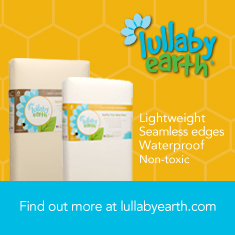polyurethane finish on wood furniture
Question from petercsantoro@yahoo.com
I am currently trying to find less toxic furniture, particularly a dining table and chairs. I did find a teak table which was natural, untreated wood; however, the chairs were a beechwood with a water-based white paint and polyurethane finish. I cannot seem to find chairs without a polyurethane finish unless I spend more and purchase teak chairs as well. Do you recommend avoiding the polyurethane finished wood as much as possible? Is it possible to coat the chairs with a Safecoat sealer or something? Thank you!
Debra’s Answer
It’s not necessary to avoid polyurethane finish. It’s the solvents in the polyurethane finish that are toxic, not the polyurethane itself. Right at the moment, I am sitting at a desk with a polyurethane finish. As long as the finish is cured enough that it is no longer outgassing VOCs, a polyurethane finish is fine.
Cooking tools
Question from petercsantoro@yahoo.com
What cooking tools are best to use? Do you prefer wood, silicone, or nylon? I’ve never used nylon, only wood (bamboo) and silicone. What do you think of silicone cookware, such as a silicone steamer? Thanks!
Debra’s Answer
Personally, most of my cooking tools are wood. I like to buy handcrafted wooden cooking tools when I find them, and have quite a collection. Don’t use nylon tools. Still use a few stainless steel tools, but mostly wood.
I use a bamboo steamer, don’t like the silicone ones. I stay away from the brightly colored silicone, but do use plain silicone baking mats (silpats).
Non-toxic Carpet for Cars?
Question from Sam
Hi Debra and GL Members,
We’ve been having some problems with our car since suffering a leak which has contaminated the carpet. We are looking to have the car remediated and the carpet removed.
Once the car is cleaned we’d like to try and use non-toxic carpeting instead of the awful car carpeting. Has anyone done this before, heard of it or have any advice? We’re thinking if we can find the right NT carpet with the correct amount, it would be a matter of finding an installer to do the work.
The car is in good mechanical shape although an older Volvo, and we are not in a position to purchase even a used car. The mold smell has gotten to be too much so a real good wipe down and removal is in order. Any feedback on all of the above is most appreciated.
Thanks! Sam
Debra’s Answer
I haven’t ever replaced a carpet in a car, but thinking about it, here is what I would probably do.
All you need is some kind of covering for the floor. I would get some area rugs you like, cut them in pieces to fit and attach them with velcro strips. This way you could remove them and clean them if you wanted to.
I just hung a decorative platter on the tile over my stove with velcro strips. Though they have adhesive backing, there was no offensive odor. The velcro strips are holding the platter very securely and I can remove it for washing whenever I want to. I was very happy to discover that I could hang things on tile with velcro.
Getting Rid Of Cock Roaches And Other Bugs
Question from wfan66
I have read that using boric acid is toxic and it should not be used, is this true or not?
What other things should i use and how should i apply each one of the things that are recommended? I need it because i have a servere roach and bug problem in my home.
thanks alot
Debra’s Answer
In my book Home Safe Home I give some general recommendations for controlling pests without pesticides:
* don’t give them food
* don’t give them water
* don’t give them shelter
More details are on pages 136-137.
Here are some links to online resources that give detailed descriptions of how to control cockroaches without chemicals:
* Sierra Club: Hey Mr. Green: Nontoxic Roach Control
* Steve Tvedten’s “The Bug Stops Here”: Intelligent Controls for Cockroaches
Local Ordinances Protect Communities from Toxics
Yes, you can do something to protect your local community from toxics.
“Since 1998, more than 125 municipalities have passed ordinances that explicitly put their citizens’ rights ahead of corporate interests, despite the existence of state and federal laws to the contrary. These communities have banned corporations from dumping toxic sludge, building factory farms, mining, and extracting water for bottling. Many have explicitly refused to recognize corporate personhood. Over a dozen townships in Pennsylvania, Maine, and New Hampshire have recognized the right of nature to exist and flourish (as Ecuador just did in its new national constitution). Four municipalities, including Halifax in Virginia, and Mahoney, Shrewsbury, and Packer in Pennsylvania, have passed laws imposing penalties on corporations for chemical trespass, the involuntary introduction of toxic chemicals into the human body.”
I am inspired! Read more at Yes: Corporate Control? Not in These Communities
Romertopf
 Clay bean pots, casseroles, and roasters in many sizes (the largest roaster holds a 17-pound turkey) for easy, efficient, healthy cooking. Clay pot cooking seals in nutrients and cuts down on the need for added fats.
Clay bean pots, casseroles, and roasters in many sizes (the largest roaster holds a 17-pound turkey) for easy, efficient, healthy cooking. Clay pot cooking seals in nutrients and cuts down on the need for added fats.
Renewable Choice Energy
Remineralize The Earth
"The remineralization of forests, farms, orchards, and gardens with glacial gravel and rock dust is nature's way to regenerate and fertilize soils. During an Ice Age, as glaciers grind rock to a fine dust over millennia, a fertile soil is created. Adding finely ground gravel dust to soils is a tremendous boost to organic agriculture and can make it truly viable by adding up to a hundred elements and trace minerals needed by all life. Rock dust also nourishes the microorganisms in the soil, whose protoplasm is the basis of all living things
Reforest Teak
Teak outdoor furniture with exceptionally aesthetic design, made from teak harvested from "sustainably managed hardwood plantations that are returning abandoned cattle pastures to ecological productivity. Our ecological reforestation work also helps to combat global warming by facilitating essential carbon offset sequestration opportunities. Our plantations in Costa Rica are certified by the Forest Stewardship Council (FSC) through the SmartWood program of the Rainforest Alliance, assuring our customers that our forest plantations are managed sustainably and in a way that respects the present and future needs of neighboring communities."
Cleaning wood furniture
Question from wfan66
I dont want to make my own wood furniture cleaner instead I would like to know which products are the best I can buy from any stores like whole foods, amazon,etc CAN IT BE USED ON ANY WOOD SURFACE? thanks alot df
Debra’s Answer
Readers, what products do you recommend?
I personally do have wood furniture, but I don’t ever clean it with anything, I just dust it.
One of the issues about cleaning wood furniture is that wood has many different finishes. The finish on my desk, for example, is Flecto Diamond Finish, a water-based polyurethane finish that dries nontoxic. I can just wipe it with a damp sponge if I need to, but mostly just dust.
Another table has a plant-based finish by Auro, which gets sticky if you put water on it.
So your first question needs to be: what kind of finish does your wood furniture have?

 Renewable energy certificates using 100% wind energy.
Renewable energy certificates using 100% wind energy.





